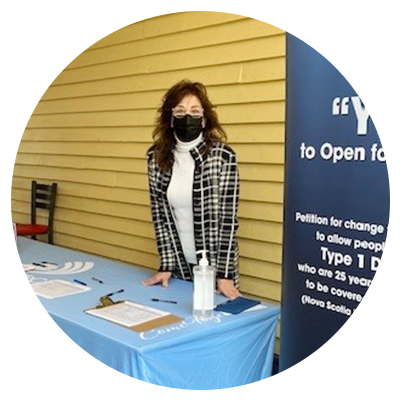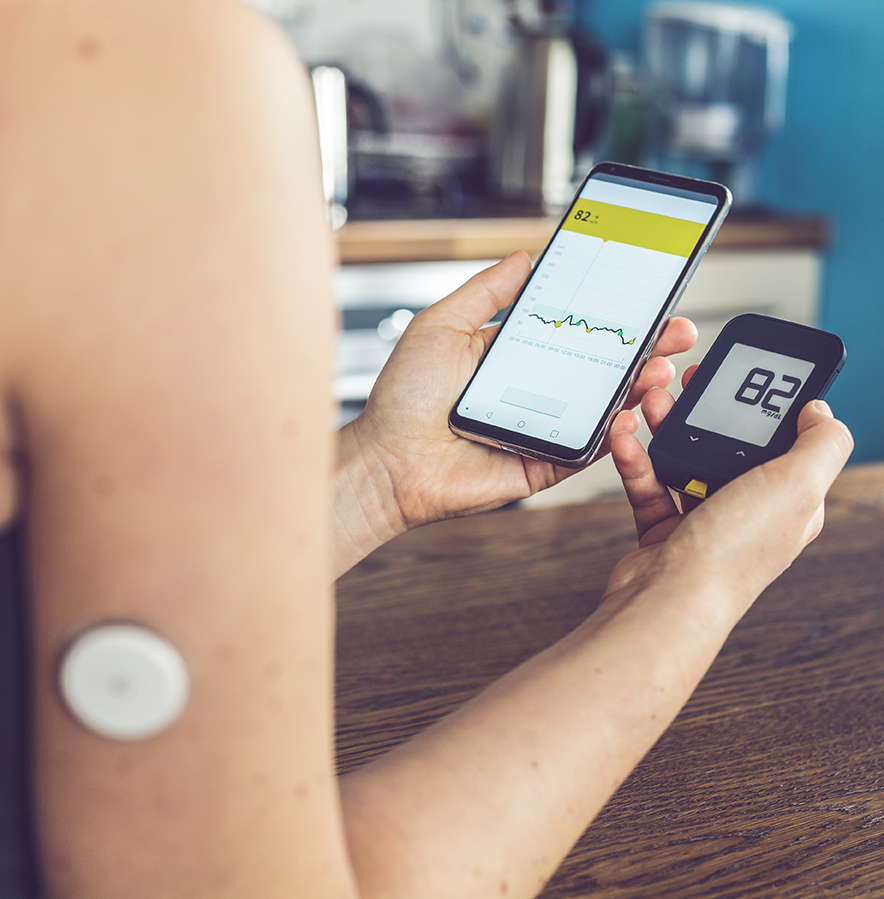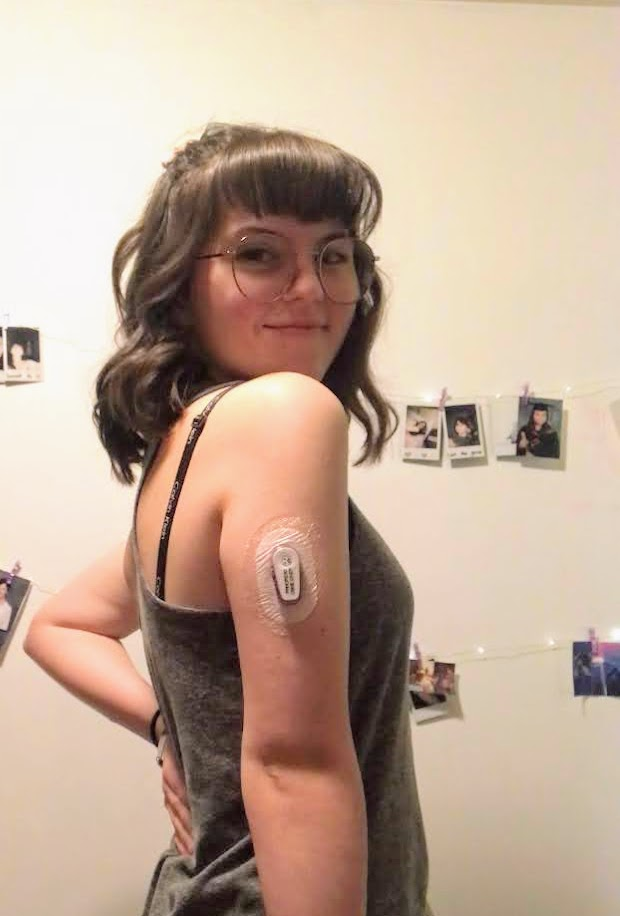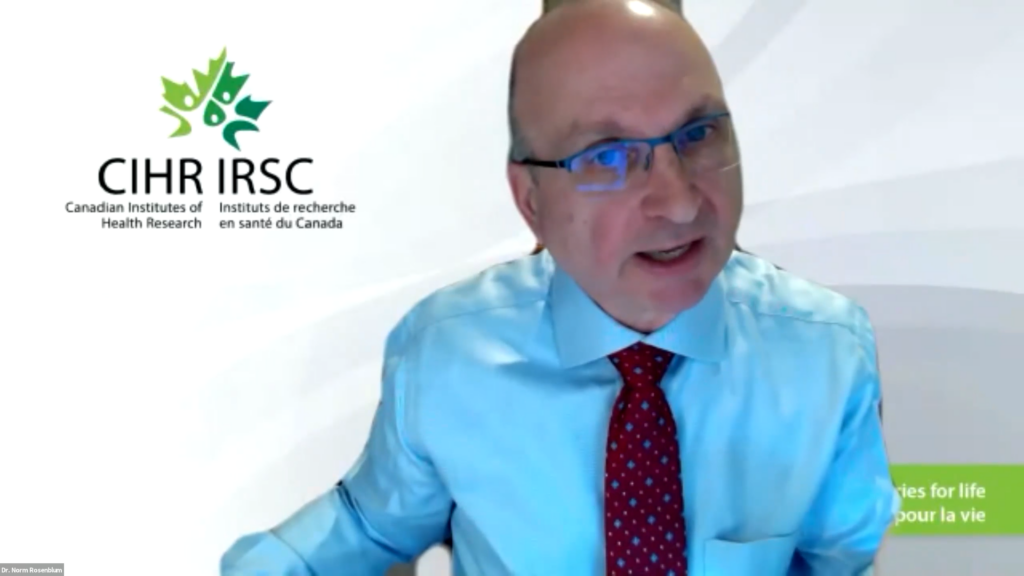Why advocacy matters
The driving force behind JDRF’s government relations and advocacy strategy is to help Canada’s decision-makers understand the impact of type 1 diabetes (T1D) and what needs to be done to improve the lives of those affected by the disease. We put T1D on the government agenda by actively participating in the legislative decision-making process and giving a voice to the most pressing issues facing the T1D community.
A year in review
In 2021, we set out to renew continued investments in T1D research through the JDRF-CIHR Partnership to Defeat Diabetes, expand access to the Disability Tax Credit and support the creation of a national diabetes framework. The federal government announced their commitment to all three of these issues in Budget 2021 and have set the wheels in motion for implementation.
Provincially, our Access For All campaign helped to increase access, affordability and use of advanced glucose monitoring technology with new public coverage in British Columbia, Manitoba and Saskatchewan. In addition, expansion of insulin pump programs in both Manitoba and Saskatchewan mean more people can access these devices.
None of this work would be possible without our incredible and passionate volunteers. We are always building our grassroots advocacy network to be able to achieve Access for All for even more Canadians impacted by T1D.
Federal Accomplishments
- Government of Canada renewed funding for JDRF-CIHR Partnership to Defeat Diabetes
- National diabetes framework aka Diabetes 360⁰, improvements to DTC also achieved in Budget ’21
- Bringing Breakthroughs to Life: Type 1 Diabetes Research Symposium draws 228 participants including Health Canada staff, researchers, clinicians, diabetes organizations, others.
Provincial Accomplishments
- Access For All BC Online Community Consultations drew 128 participants (including a dozen BC MLAs) – All MLAs emailed a summary video with clips from the event
- Presentations to BC Liberal and NDP Caucus
- Expanded access to insulin pump coverage in two provinces – MB (to age 25) & SK (to all ages)
- New CGM coverage in four provinces – includes MB (until age 25), SK (until age 18), QC and BC (all ages but w/ eligibility criteria & only one vendor)
There is still much work to be done, and our advocacy efforts, along with those of our T1D community, will continue to focus on patient choice, universal accessibility and improving lives today.
In her own words.
JDRF Advocacy intern Anne Pettigrew on why she volunteers
November is National Diabetes Awareness Month (NDAM)! NDAM means something different to every person living with or affected by T1D. T1D is a very personal, individualized disease, and no two people with type 1 diabetes are exactly the same in terms of how they manage their diabetes, the diabetes technology they may use, or with their personal diabetes stories. We are all individual people who happen to live with the same disease. That’s why it makes sense that NDAM is meaningful to each of us in a slightly different way.
Personally, I feel like if there was ever a perfect time to get loud about T1D, it would be during the month that is devoted to raising awareness about diabetes. However, while November is a month where I get loud about T1D, it is also a month where I quietly reflect on my diabetes journey, how far I have come, and how far is still left to go. For me, NDAM is a time of pride, wonder, pondering, and grief – all at once. It is a rollercoaster of a month, and at times it can be a scary one to ride, but I look forward to it every year because it is – for me, at least – the perfect opportunity to advocate for T1D.
Advocacy is most effective when it is personalized to the advocate. This is especially true when the advocacy concerns something as individualized as T1D. For this reason, when I am talking about T1D with the intent to educate about it, I make sure to keep it very personal to me. I tell my story, speak to my personal experiences, and advocate for T1D issues that I care and know the most about.
That is not to say that any one of the several problems that people with T1D face is more important than othess. T1D is a multi-faceted, three-dimensional disease that demands so much from a person – financially, emotionally, mentally, physically, and with regards to time. – None of these demands are less worthy of being advocated for than another.
There are many equally important ways that T1D management could be made easier with increased support from the government, from communities, and from healthcare providers; but, with so many problems that need to be solved, it is too much for one advocate to take on alone. That is why advocacy needs to be personal – there are approximately 300,000 people with T1D in Canada, all of us with our own stories that deserve to be told, and all of us impacted differently by things like the price of insulin, access to medical technology, and the physical and mental burdens of living with this disease. One person cannot tell 300,000 stories in a way that will make a lasting impression; it is much more effective if we each focus on telling our own story
For example, I use a continuous glucose monitor (CGM) to make my management safer and easier, and CGMs are not covered by the provincial government in Ontario where I live. This personally impacts me and my diabetes story, so it is easy for me to get involved with JDRF’s Access for All campaign by talking to the Ontario government officials about why CGMs should be provincially funded. The trick to personalizing your advocacy is choosing a couple of key aspects of T1D to focus on and making sure those aspects are ones that are close to your heart.
A final way to make sure your advocacy is effective and impactful is to make sure you are advocating in a way that lets you stay mostly in your comfort zone – advocacy is personal to you, NDAM is personal to you, and T1D is personal to you. There is no one right way to get loud about T1D. It can be contacting your local government official to talk about T1D, posting on social media about T1D, or talking to your family and friends about T1D.
Whatever you do to mark this National Diabetes Awareness Month, however you go about your advocacy, and wherever you are in your T1D journey, JDRF is right here with you!
Anne Pettigrew, JDRF Volunteer and Advocate
Diagnosed two weeks shy of her 12th birthday.
Interested in becoming a JDRF advocate like Anne? Sign up here.








